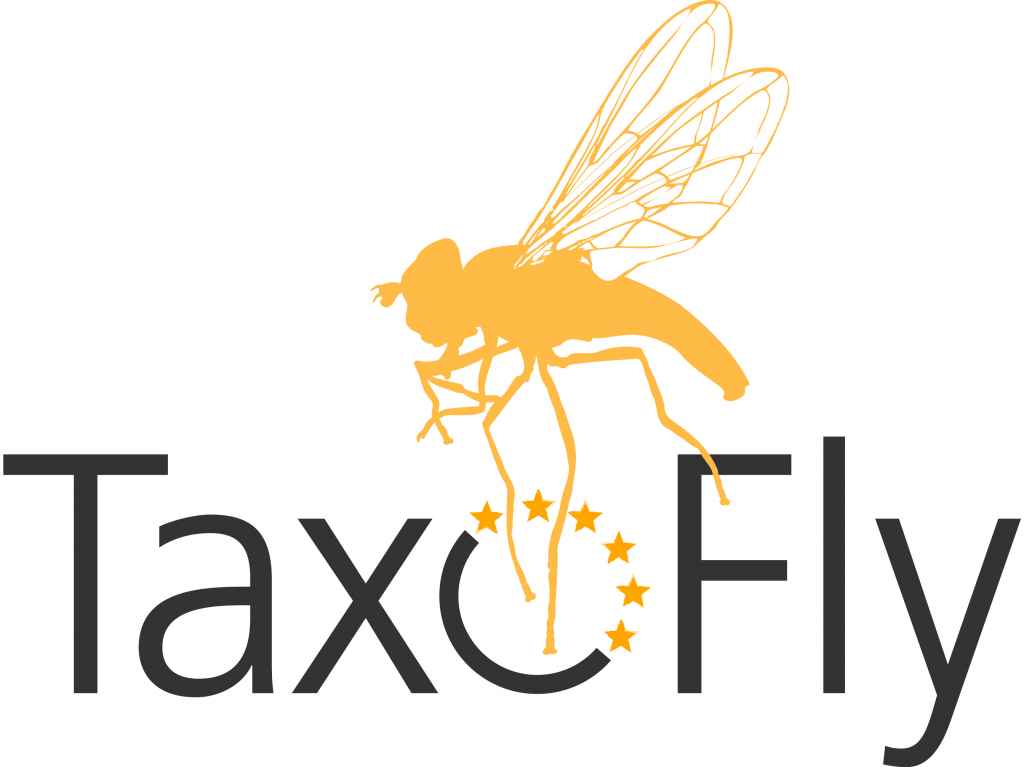Taxo-Fly
Taxo-Fly - an EU-funded project gathering taxonomic information for all European hoverfly species

After bees and bumblebees, hoverflies constitute the most significant insect pollinator group globally. Typically, adult hoverflies consume nectar and pollen from flowers and herbaceous plants, and visit at least over 70% of all plants used for food production globally.
The larvae of many hoverfly species eat aphids and other plant pests, while the larvae of certain species use degradable organic matter for nutrition, making them part of nutrient re-cycling.
The appearance of different hoverfly species varies greatly; some of the largest species are hairy and have yellow stripes thus mimicking bumblebees and wasps, while some of the smallest resemble small black bees or other small species of Hymenoptera.

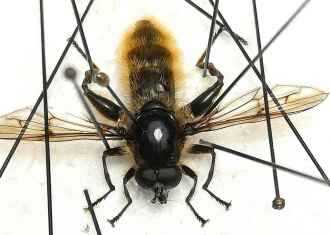
About one-third of the 900+ European hoverfly species are in clear need of updated morphological characterization, or their taxonomic status or nomenclature is in need of additional clarification.
Taxo-Fly - gathering taxonomic information for all European hoverfly species
Taxo-Fly is a three-year project commissioned by the Directorate General for Environment (DG-Env) of the European Commission (EC) to develop resources for European hoverfly inventory and taxonomy. Through Taxo-Fly, the European Commission will make taxonomic information on Hoverflies easily available and accessible. The taxonomic information will be usable by researchers as well as citizen scientists.
The overall objective of Taxo-Fly is to create a new taxonomic knowledge base, which lays the ground for the identification of the Hoverflies of Europe. The tasks carried out by Taxo-Fly project members will support other European Commission funded projects, such as the EU Pollinator Monitoring Scheme (EUPoMS), the Preparatory Action for EU Pollinator Monitoring Scheme and Indicators (SPRING project), the Horizon 2020 Europe research projects (POSHBEE, SAFEGUARD), and European National action plans for pollinators.
The goal is to compile accurate taxonomic and ecological data of the more than 900 hoverfly species occurring in Europe, and produce high-quality images of the hoverflies useful for species identification. The web platform will constitute an openly available robust knowledge platform, and will serve both the broad public, and professionals in the field.
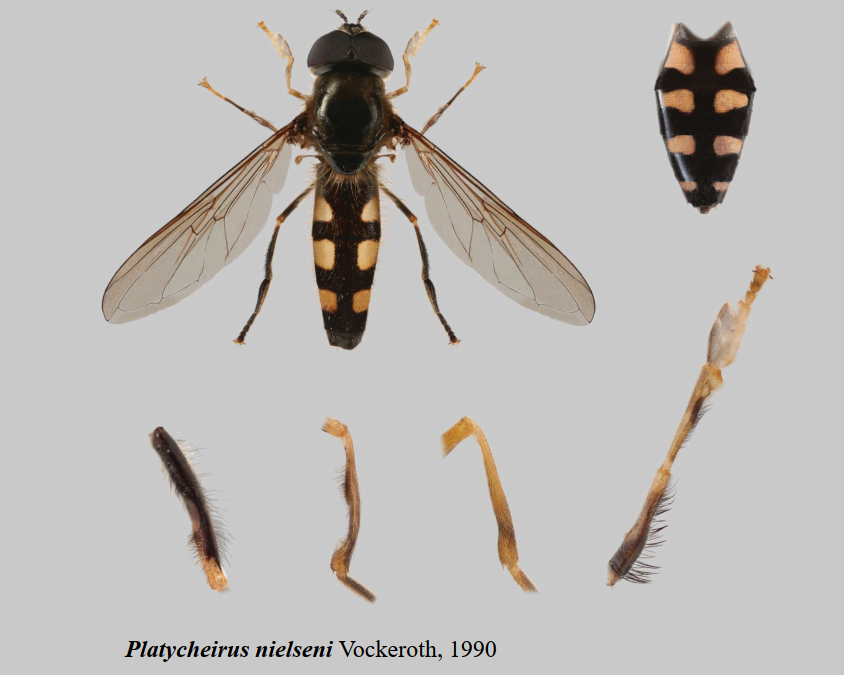
With the produced high-quality digital images of every hoverfly species we can obtain within the project time, we will create a new resource of standardized hoverfly portrait images. Diagnostic characters of hoverfly parts will be clearly portrayed using innovative solutions. We believe that high-quality digital images are an important deliverable of the project, as the images will be crucial in production of future tools such as identification keys to hoverfly genera and species at regional level, and for illustrating (regional) field guides.
Milestones
The milestones of our project are the factsheets for each European hoverfly species. These will include descriptions, illustrations of morphological characters, photographs, and relevant information on the life-histories, host-plant associations, and habitats of European hoverfly species.
2021: Project organization
2021: Virtual Workshop to collect ideas and feedback on the project and the web platform
2022: Concept of online web platform
2022: Information collected for 30% of species
2023: Information collected for 60% of species
2024: Information collected for 100% of species
Project coordinator 
Participant organizations 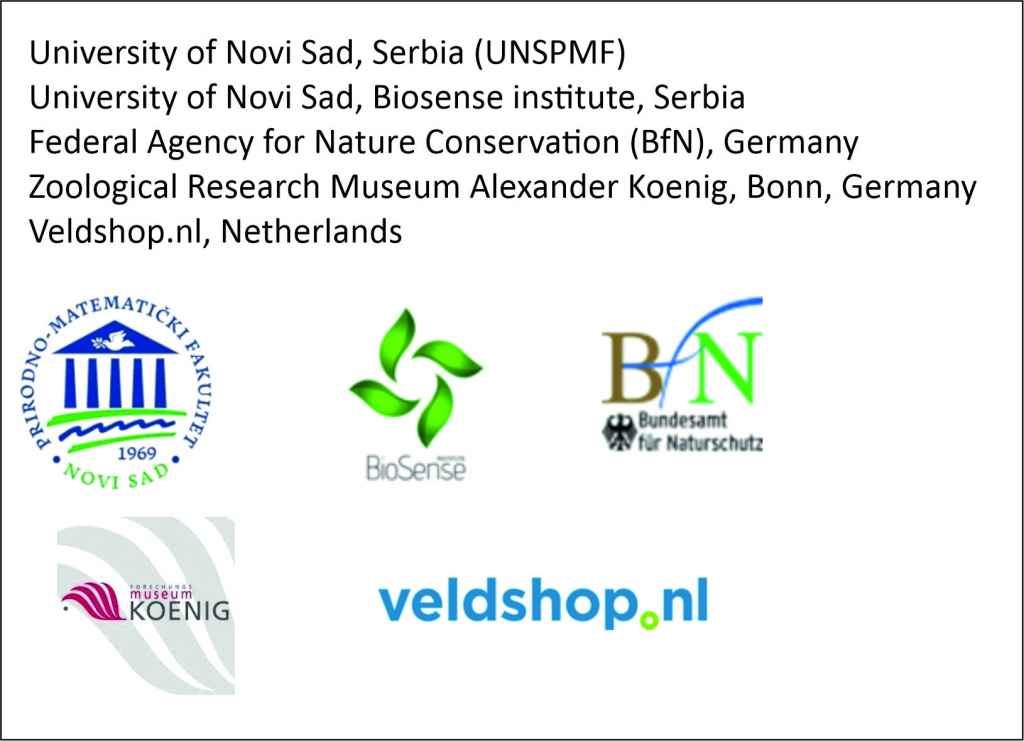
Core team members
 Dr Aino Juslén is the Administrative Lead of the Taxo-Fly project. I work as the Director of Finnish Museum of Natural History Luomus. I have a strong experience in collaborating in and leading international projects, including e.g. EU Horizon 2020 RISE program (Research and Innovation Staff Exchange Programme) for the project FlyHigh (Insect-plant relationships: insights into biodiversity and new applications) and ongoing DiSSCo Prepare Horizon 2020, INFRADEV project led by Naturalis. I´m strongly involved in the development of the Finnish Biodiversity Information Facility FinBIF and act as the Head of the National delegation of the Global Biodiversity Information Facility GBIF. My specific expertise include also species red-list assessment.
Dr Aino Juslén is the Administrative Lead of the Taxo-Fly project. I work as the Director of Finnish Museum of Natural History Luomus. I have a strong experience in collaborating in and leading international projects, including e.g. EU Horizon 2020 RISE program (Research and Innovation Staff Exchange Programme) for the project FlyHigh (Insect-plant relationships: insights into biodiversity and new applications) and ongoing DiSSCo Prepare Horizon 2020, INFRADEV project led by Naturalis. I´m strongly involved in the development of the Finnish Biodiversity Information Facility FinBIF and act as the Head of the National delegation of the Global Biodiversity Information Facility GBIF. My specific expertise include also species red-list assessment.
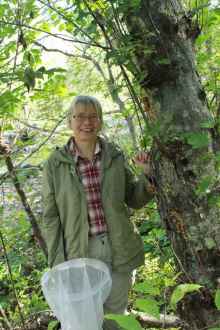 Dr Gunilla Ståhls-Mäkelä, Finnish Museum of Natural History Luomus, Helsinki, Finland
Dr Gunilla Ståhls-Mäkelä, Finnish Museum of Natural History Luomus, Helsinki, Finland
She is the coordinator of Taxo-Fly project.Her research subject is molecular systematics and taxonomy of hoverflies (Diptera, Syrphidae) and and flat-footed flies (Platypezidae) employing both morphological and molecular data and different analytical methods. I have published on hoverfly systematics, classification, phylogeography as well as species level studies integrating morphological and molecular data for taxonomic revisions. I have continuous international collaboration with research groups in e.g. Serbia and Spain. Recent funding includes EU Horizon 2020 RISE program (Research and Innovation Staff Exchange Programme) for the project FlyHigh (Insect-plant relationships: insights into biodiversity and new applications) and the ongoing EU Tender (SPRING) focusing on developing monitoring schemes for different groups of pollinator insects, including hoverflies
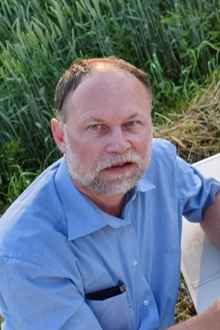 Dr Axel Ssymank, German Federal Agency for Nature Conservation (BfN), Bonn, Germany Vegetation scientist and entomologist (specialised on Syrphidae, Conopidae & Stratiomyidae). Has been working on hoverflies for more than 35 years, specifically on taxonomy (revisions, species descriptions), faunistics, pollinator ecology and habitat preferences mainly in Europe and Africa. Involved in Red List for Germany (hoverflies & habitats), EU Red list on Habitats, EU Habitats Directive and Natura 2000 and Species Assessor in the EU Red list of hoverflies. PhD focused on functional relations between flower visitors and vegetation. In the Taxo-Fly project he is a member of the Core group, heading the Platform development group, and a Data provider.
Dr Axel Ssymank, German Federal Agency for Nature Conservation (BfN), Bonn, Germany Vegetation scientist and entomologist (specialised on Syrphidae, Conopidae & Stratiomyidae). Has been working on hoverflies for more than 35 years, specifically on taxonomy (revisions, species descriptions), faunistics, pollinator ecology and habitat preferences mainly in Europe and Africa. Involved in Red List for Germany (hoverflies & habitats), EU Red list on Habitats, EU Habitats Directive and Natura 2000 and Species Assessor in the EU Red list of hoverflies. PhD focused on functional relations between flower visitors and vegetation. In the Taxo-Fly project he is a member of the Core group, heading the Platform development group, and a Data provider.
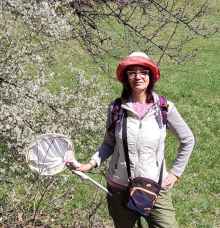 Professor Snežana Radenković, Department of Ecology and Biology, Faculty of Sciences, University of Novi Sad, Serbia.Her field of scientific research includes faunistics, zoogeography, taxonomy, systematics and conservation of hoverflies. She has studied hoverflies for 20 years, and participated in 12 national and seven international projects on hoverfly conservation, biodiversity, faunistics and monitoring. Presently she is a PI in the national ‘Serbian Pollinator Advice Strategy - for the next normal’ (SPAS), funded by the Science Fund of the Republic of Serbia (2022-2024), an associate of the Academic Committee for the Study of Serbian Fauna at the Serbian Academy of Sciences and Arts (SANU), a member of the IUCN Hoverfly Specialist Group (HSG) and Species assessor in the IUCN European Red List of Hoverflies. In the Taxo-Fly project he is a Core group member, and in the Data collecting group.
Professor Snežana Radenković, Department of Ecology and Biology, Faculty of Sciences, University of Novi Sad, Serbia.Her field of scientific research includes faunistics, zoogeography, taxonomy, systematics and conservation of hoverflies. She has studied hoverflies for 20 years, and participated in 12 national and seven international projects on hoverfly conservation, biodiversity, faunistics and monitoring. Presently she is a PI in the national ‘Serbian Pollinator Advice Strategy - for the next normal’ (SPAS), funded by the Science Fund of the Republic of Serbia (2022-2024), an associate of the Academic Committee for the Study of Serbian Fauna at the Serbian Academy of Sciences and Arts (SANU), a member of the IUCN Hoverfly Specialist Group (HSG) and Species assessor in the IUCN European Red List of Hoverflies. In the Taxo-Fly project he is a Core group member, and in the Data collecting group.
 Professor Ante Vujić, Department of Ecology and Biology, Faculty of Sciences, University of Novi Sad, Serbia
Professor Ante Vujić, Department of Ecology and Biology, Faculty of Sciences, University of Novi Sad, Serbia
His main research interests are hoverfly biodiversity, conservation and taxonomy, with particular focus on the hoverfly fauna of the Mediterranean area. He has participated as PI in multiple national and international research projects concerning the biodiversity and conservation of hoverflies. He is co-charing the work with the IUCN European Red List of Hoverflies. In the Taxo-Fly project he is a Core group member, and in the Data collecting group.
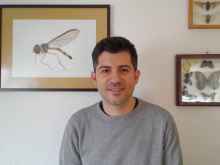 Dr Ximo Mengual, Zoologisches Museum A. Koenig, Bonn, GermanyHe has numerous publications on the systematics and taxonomy of true flies (Diptera) with specific emphasis on the world-wide family Syrphidae, commonly known as Flower flies or Hoverflies. The phylogenetic relationships of this group of flies and their placement within Muscomorpha are two other focal research topics. Presently he is working with molecular techniques using Next-Generation Sequencing and has participated in developing baits for Anchored Hybrid Enrichment to produce phylogenomic sequence data for hoverfly phylogenetics and classification.
Dr Ximo Mengual, Zoologisches Museum A. Koenig, Bonn, GermanyHe has numerous publications on the systematics and taxonomy of true flies (Diptera) with specific emphasis on the world-wide family Syrphidae, commonly known as Flower flies or Hoverflies. The phylogenetic relationships of this group of flies and their placement within Muscomorpha are two other focal research topics. Presently he is working with molecular techniques using Next-Generation Sequencing and has participated in developing baits for Anchored Hybrid Enrichment to produce phylogenomic sequence data for hoverfly phylogenetics and classification.
 MSc Sander Bot is an independent researcher from the Netherlands. He is an active collector which brings him all over Europe and the rest of the world in search for hoverflies (Syrphidae). He is mainly interested in taxonomy and identification and within hoverflies the focus lies on the genus Cheilosia. He is author of the field guide to the hoverflies of the Netherlands and Belgium, and works on a field guide to the hoverflies of Britain and Northwestern Europe. Currently he works on several other projects including one on the genus Cheilosia in the Caucasus.In Taxo-Fly is is the Leader of the Photo Team.
MSc Sander Bot is an independent researcher from the Netherlands. He is an active collector which brings him all over Europe and the rest of the world in search for hoverflies (Syrphidae). He is mainly interested in taxonomy and identification and within hoverflies the focus lies on the genus Cheilosia. He is author of the field guide to the hoverflies of the Netherlands and Belgium, and works on a field guide to the hoverflies of Britain and Northwestern Europe. Currently he works on several other projects including one on the genus Cheilosia in the Caucasus.In Taxo-Fly is is the Leader of the Photo Team.
 Dr Marija Miličić, Research Associate at the BioSense Institute, University of Novi Sad, Serbia.
Dr Marija Miličić, Research Associate at the BioSense Institute, University of Novi Sad, Serbia.
Her research work has focused on the analysis of distributional patterns of hoverflies, factors affecting them, as well as on research of their functional diversity. She is a member of the IUCN (International Union for Conservation of Nature) specialist group for hoverflies. She has participated in several national and international project concerning hoverfly distribution patterns, biodiversity and ecology. Within the Taxo-Fly project, she is in charge for the compilation of distributional data and production of distribution maps.
 Dr Marina Janković Milosavljević, Research Associate at the Faculty of Sciences, University of Novi Sad. She defended her PhD thesis titled “Conservation of hoverflies (Diptera: Syrphidae) and evaluation of PHA (Prime Hoverfly Areas)” in September 2021. Her scientific field of interest is conservation biology. Main focus of her research is related to the conservation status of hoverfly species (especially protected and strictly protected species in Serbia) and evaluation of the areas designated as important for survival of hoverflies in Serbia (Prime Hoverfly Areas – PHA). She is a member of the Advisory Committee of the IUCN (International Union for Conservation of Nature) Hoverfly Specialist Group. Within Taxo-Fly project, she will assist in production of distribution maps
Dr Marina Janković Milosavljević, Research Associate at the Faculty of Sciences, University of Novi Sad. She defended her PhD thesis titled “Conservation of hoverflies (Diptera: Syrphidae) and evaluation of PHA (Prime Hoverfly Areas)” in September 2021. Her scientific field of interest is conservation biology. Main focus of her research is related to the conservation status of hoverfly species (especially protected and strictly protected species in Serbia) and evaluation of the areas designated as important for survival of hoverflies in Serbia (Prime Hoverfly Areas – PHA). She is a member of the Advisory Committee of the IUCN (International Union for Conservation of Nature) Hoverfly Specialist Group. Within Taxo-Fly project, she will assist in production of distribution maps
 Dr Ana Grković, Research associate at the Department of Biology and Ecology, Faculty of Sciences, University of Novi Sad. Her research has focused on the taxonomy of hoverflies (Diptera: Syrphidae), with an emphasis on the taxonomy and systematics of the genus Eumerus. She also has experience in mosquito surveillance in the area of Vojvodina in which she participated as team leader on provincial project from 2007–2009. She is a member of the IUCN specialist group for hoverflies, and was involved as assessor for IUCN Red List Assessments for three genera. In the Taxo-Fly projects she is Core group member, an in the Data and Image collecting groups.
Dr Ana Grković, Research associate at the Department of Biology and Ecology, Faculty of Sciences, University of Novi Sad. Her research has focused on the taxonomy of hoverflies (Diptera: Syrphidae), with an emphasis on the taxonomy and systematics of the genus Eumerus. She also has experience in mosquito surveillance in the area of Vojvodina in which she participated as team leader on provincial project from 2007–2009. She is a member of the IUCN specialist group for hoverflies, and was involved as assessor for IUCN Red List Assessments for three genera. In the Taxo-Fly projects she is Core group member, an in the Data and Image collecting groups.
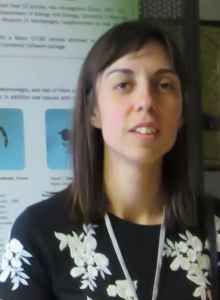 Dr. Tamara Tot, Research assistant, Department of Biology and Ecology, Faculty of Sciences, University of Novi Sad, Serbia. Her scientific fields of interest are taxonomy and systematics of hoverflies (Syrphidae), especially morphological taxonomy. She has participated in several hoverfly collecting trips. She has contributed to multiple scientific papers on hiverfly taxonomy and systematics. Species Assessor in the IUCN European Red list of Hoverflies. In the Taxo-Fly projects she is Core group member, an in the Data and Image collecting groups.
Dr. Tamara Tot, Research assistant, Department of Biology and Ecology, Faculty of Sciences, University of Novi Sad, Serbia. Her scientific fields of interest are taxonomy and systematics of hoverflies (Syrphidae), especially morphological taxonomy. She has participated in several hoverfly collecting trips. She has contributed to multiple scientific papers on hiverfly taxonomy and systematics. Species Assessor in the IUCN European Red list of Hoverflies. In the Taxo-Fly projects she is Core group member, an in the Data and Image collecting groups.
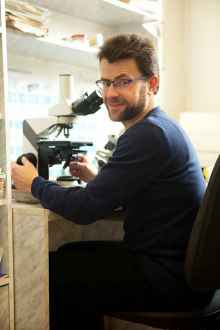 Dr Libor Mazánek, Department of disinfection, disinsection and deratisation, Antiepidemic division of Regional public health authority in Olomouc, and external lecturer at Faculty of Science, Palacký University, Olomouc, Czech Republic. He gained insight into taxonomy of the genus Eupeodes and related genera of the tribe Syrphini under leadership of Ing. Pavel Láska during his studies at university. Besides his current profession (pest control expert and epidemiologist of parasitic and zoonotic diseases) his interest on Syrphidae remained as private. He has been responsible for processing of Syrphidae family for almost all project concerning dipteran fauna in the Czech and Slovak Republics during last three decades. As an expert on taxonomy of the genus Eupeodes and related genera, he has participated as co-author or consultant on most other research projects concerning Syrphidae across whole Europe. He is member of the IUCN Hoverfly Specialist Group (HSG) and Species assessor responsible on selected genera of the tribe Syrphini in the IUCN European Red List of Hoverflies. In the Taxo-Fly project he is a Core team member, and in the data collecting group.
Dr Libor Mazánek, Department of disinfection, disinsection and deratisation, Antiepidemic division of Regional public health authority in Olomouc, and external lecturer at Faculty of Science, Palacký University, Olomouc, Czech Republic. He gained insight into taxonomy of the genus Eupeodes and related genera of the tribe Syrphini under leadership of Ing. Pavel Láska during his studies at university. Besides his current profession (pest control expert and epidemiologist of parasitic and zoonotic diseases) his interest on Syrphidae remained as private. He has been responsible for processing of Syrphidae family for almost all project concerning dipteran fauna in the Czech and Slovak Republics during last three decades. As an expert on taxonomy of the genus Eupeodes and related genera, he has participated as co-author or consultant on most other research projects concerning Syrphidae across whole Europe. He is member of the IUCN Hoverfly Specialist Group (HSG) and Species assessor responsible on selected genera of the tribe Syrphini in the IUCN European Red List of Hoverflies. In the Taxo-Fly project he is a Core team member, and in the data collecting group.
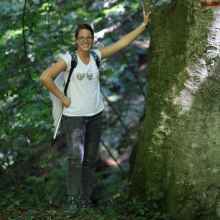 Dr. Laura Likov, Research Associate, Faculty of Sciences, University of Novi Sad, Serbia.
Dr. Laura Likov, Research Associate, Faculty of Sciences, University of Novi Sad, Serbia.
Her field of interest is taxonomy and faunistic analyses of hoverflies, as well as their ecology and conservation. She has contributed to multiple scientific papers on the taxonomy and biodiversity of the hoverfly genus Merodon. Species Assessor in the IUCN European Red list of Hoverflies. In the Taxo-Fly projects she is a Core group member, an in the Data and Image collecting groups.
Contact us
Gunilla Ståhls-Mäkelä, Gunilla.stahls (at) helsinki.fi
(https://researchportal.helsinki.fi/en/persons/gunilla-st%C3%A5hls Twitter)
Main support
Taxonomic resources for EU Pollinator Monitoring Scheme for hoverflies (Lot 2) (Diptera, Syrphidae), acronym ‘TAXO-FLY’, following the contract signed between the University of Helsinki, Finnish Museum of Natural History Luomus and the European Commission (EC),Contract N° 09.029901/2021/850402/SER/ENV.D.2

Official EU pollinator website:
https://wikis.ec.europa.eu/display/EUPKH/EU+Pollinator+Information+Hive
IUCN European Red List of Hoverflies:
https://www.iucn.org/regions/europe/our-work/biodiversity-conservation/e...
